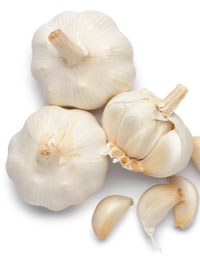
It’s incredibly easy to harvest your own crop of this pungent vegetable.
Most first-time garlic growers are surprised at just how easy it is to grow – it’s virtually just a matter of putting the cloves in the ground, waiting six months, then harvesting them, with a little bit of weeding in-between.
Varieties
There are two main varieties of garlic: hardneck and softneck. Hardneck varieties send up a flower stalk, which needs to be removed to prevent a decreased yield. The flower stalks are good to eat – they can be used in similar ways to spring onions.
Planting
Traditionally, garlic is planted in mid-winter on the shortest day and harvested on the longest day, or thereabouts.
Garlic likes fertile, well-drained, friable soil with plenty of organic matter. Prepare your bed then mulch heavily with grass clippings, straw, wood chips or post peelings – this saves on weeding.
Break up your garlic bulb into the individual cloves (not more than a day or two before you plant or the cloves will lose vigour) and push them through the mulch into the soil, pointed end up, until the tip is just covered.
Plant at about 150mm spacings in rows 300mm apart.
Since garlic grows through the winter months when rainfall is plentiful, you probably won’t need to water it, but keep an eye on it to see that it doesn’t dry out.
Don’t water two weeks before harvest or the bulbs will stain.
Harvesting
Garlic is ready to be harvested when the stem and leaves turn yellow, usually towards the end of December.
Loosen the soil with a fork and pull out the plants, leaving them to dry in the sun for a few days before hanging up in bunches in a dry, airy place to cure.
When thoroughly dry, roots and leaves can be trimmed off and the garlic is ready for use. Softneck garlic will keep for 6-7 months, but hardneck garlic will start to shrivel after 4-5 months.
Garlic’s nutritional benefits:
There are many reasons why you should eat garlic, including:
- Antibiotic: Garlic contains a substance called alliin, which forms a sulphur compound called allicin when cut or crushed. Allicin is antibacterial and antiviral, and is also active against fungal infections.
- Cancer: There is some evidence to suggest garlic consumption reduces the risk of gastric and colon cancers.
- Heart health: Most findings suggest garlic aids in lowering blood pressure and cholesterol.
You may also be interested in:
Garlic and the low-fodmap diet
Here’s some of our favourite recipes using garlic:
Garlic and rosemary chicken traybake
Pasta with roast cauliflower and garlic lemon crumb
www.healthyfood.com










